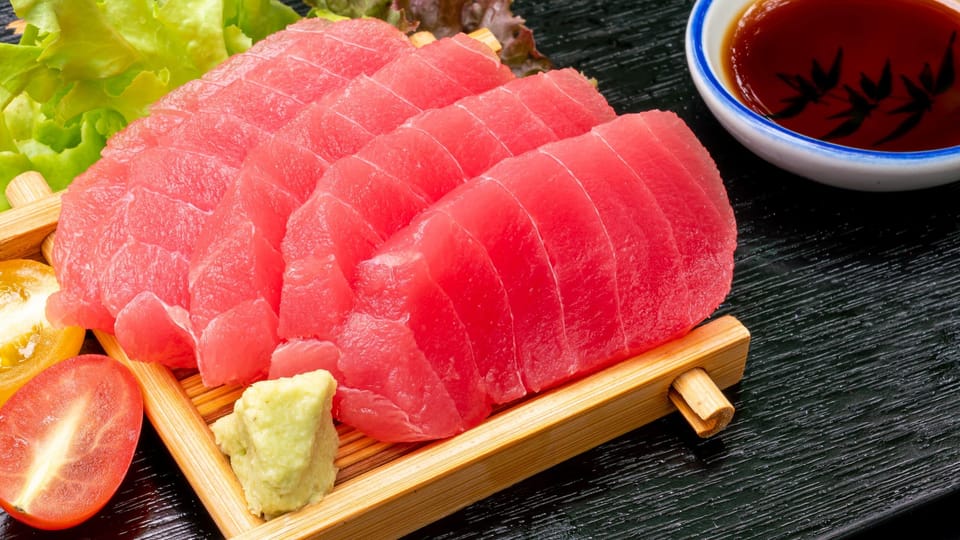There are various sashimi tuna recipes to cater to everyone’s preference. However, this sashimi tuna dish with daikon and ginger is one of the most effortless variations to try, with a minimum of ingredients.
Different fish are applicable to make sashimi, but the dipping sauce makes everything perfect for the plating. Add wine, soy sauce, mirin, dashi granules, and tamari soy sauce to a condiment bowl for a fancy presentation.
Ingredients
- Sushi-grade tuna — 1 lb.
- Daikon radish — 1 pc., 4 inches
- Fresh ginger — 1 pc., peeled
- Sake — 3 tsp.
- Mirin — 1 ½ tbsp.
- Wine — 3 tbsp., optional
- Soy sauce — ½ cup
- Tamari soy sauce — 1 ½ tbsp.
- Dashi granules — ½ tsp., if available

Instructions
- Put mirin (or wine) and sake in a small cooking pot and boil. Turn off the heat and add the soy sauce.
- Add the dashi granules and tamari sauce.
- Mix them well and let them reach room temperature.
- Cut off the daikon radish with a sharp cutter or knife and slice it into thin sheets. Make it as thin as possible.
- Stack the thin-sliced daikon radish and slice them again into thin sticks. Put all of it into a bowl of ice water and ensure that they separate.
- Gently pat dry and clean the daikon before arranging them for plating.
- Cut the preferred sashimi-grade tuna into blocks. Then, cut into thin strips in one motion.
- Arrange the sliced tuna on top of the daikon.
- Garnish the dish with parsley or similar.
- Mix grated ginger with the soy sauce.
- To serve, dip the sashimi tuna in the savory dipping sauce and eat.
- Try eating daikon radishes between bites, dipped in soy sauce.
Substitutions
- Cucumber — It can be an excellent substitute for daikon radish. This is because both ingredients have a mild refreshing taste and are crisp in texture.
- Rice vinegar with white wine — Combining sugary white wine with rice vinegar mimics mirin’s sweetness.
- Fish or vegetable stock — Dashi granules are classic Japanese stock. If one does not have those in their kitchen, making fish or vegetable stock can be a simple yet perfect alternative.
Variations
- Spicy tuna sashimi — The spicier variation uses diced jalapenos and chopped mint instead of just sprinkling parsley on top. Some also mix a few drops of sesame oil and 2 tbsp. of sriracha chili sauce.
- Sashimi tuna with avocado — After making the typical Japanese-style sashimi tuna, this variation piles the sliced tuna on top of an avocado mixture. For extra soy, scatter finely-chopped chives and sesame seeds on top.
- Soy miso tuna sashimi — Add a teaspoon of white miso, half a teaspoon of wasabi paste, and two tablespoons of olive oil.

Equipment
- Sharp cutter or knife
- Cutting board
- Sashimi knife (optional)
- Chopsticks
- Condiment bowl
- Small cooking pot
Storage
- Keep the leftovers chilled or refrigerated to preserve their freshness, it can last for up to 24-48 hours in your fridge.
- When storing, separate the condiments from the tuna to avoid sogginess and becoming too seasoned.
Pro Tips
- Sashimi tuna’s quality deteriorates pretty quickly. It is best consumed immediately fresh or right after serving.
- Although reheating sashimi leftovers is okay, consuming them cold the next day is better. But either option can still significantly alter the taste and texture of the dish.





